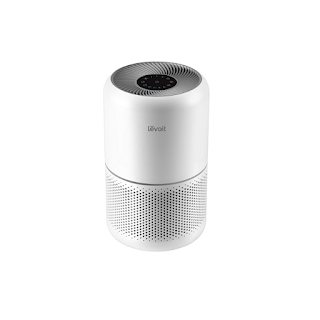How to take care of your usual air purifier
- Get link
- X
- Other Apps
Air purifiers are valuable appliances that help improve the indoor air quality of our living spaces. Proper maintenance is crucial to ensure that they function effectively and provide clean air. Here are detailed steps on how to take care of your air purifier.
Tips for Home Air Purifier Management
Regular Cleaning
1. Power off the air purifier and unplug it from the electrical outlet before cleaning.
2. Remove the outer casing or grille of the air purifier according to the manufacturer's instructions. This will provide access to the filters.
3. Clean the outer casing using a damp cloth or sponge. Do not use abrasive cleaners or submerge the unit in water.
4. Filters require regular cleaning or replacement, depending on the type:
Pre-Filter
Some air purifiers have a washable pre-filter that captures larger particles. Follow the manufacturer's instructions to clean it. Allow it to dry completely before reinserting.
HEPA Filter
High-Efficiency Particulate Air (HEPA) filters are effective at capturing small particles. Replace the HEPA filter as recommended by the manufacturer, typically every 6 to 12 months. Do not attempt to wash or vacuum the HEPA filter as it may damage its effectiveness.
Carbon Filter
Carbon filters absorb odors and chemicals. They usually need replacement every 3 to 6 months. Refer to the manufacturer's instructions for the specific replacement interval.
Ionizer or UV-C Bulb
If your air purifier has an ionizer or UV-C bulb, follow the manufacturer's guidelines for cleaning or replacement.
Dusting and Vacuuming
Regularly dust the external surfaces of the air purifier using a soft cloth or a microfiber duster. Vacuum the surrounding area to remove any accumulated dust or debris that may obstruct the airflow.
Maintaining Airflow
1. Check the vents and air intake areas for any blockages. Remove any obstacles that might hinder proper airflow.
2. Avoid placing objects near the air purifier that may obstruct the intake or outlet vents.
3. Ensure the air purifier has sufficient space around it for optimal air circulation.
Filter Replacement
Follow the manufacturer's recommendations regarding filter replacement. Regularly check the filter status indicator, if available, to determine when it needs replacement. Using a worn-out filter compromises the air purifier's efficiency.
Professional Servicing
If you encounter any technical issues or notice a decline in the performance of your air purifier, contact the manufacturer's customer service or a professional technician. They can provide assistance or recommend servicing options.
- Get link
- X
- Other Apps



